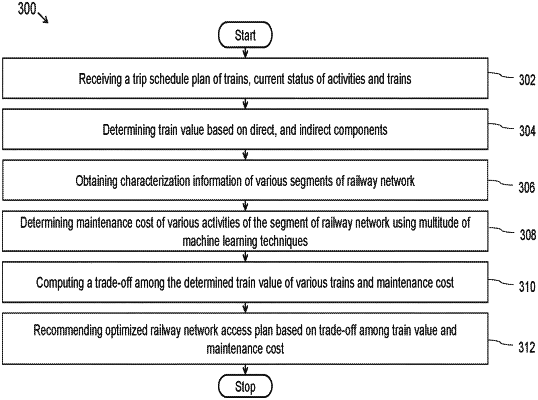| CPC B61L 27/12 (2022.01) [B61L 27/14 (2022.01); B61L 27/16 (2022.01); B61L 27/53 (2022.01); G06Q 10/06312 (2013.01); G06Q 10/20 (2013.01); G06Q 50/30 (2013.01); B61L 27/60 (2022.01)] | 13 Claims |

|
1. A processor-implemented method for a railway network access planning comprising steps of:
receiving, via an input/output interface, a trip schedule plan of one or more trains on one or more predefined days, wherein the trip schedule plan includes an occupation time for each of one or more trains in the railway network for each track segment of the railway network;
determining, via one or more hardware processors, a train value for each of the one or more trains based on one or more direct components, and one or more indirect components, wherein the one or more direct components of train value include an average revenue, an average passenger load, and a regulatory penalty, and wherein the one or more indirect components of the train value include a societal value and impact of organization policies;
obtaining, via the input/output interface, a characterization information of one or more segments of the railway network, wherein the characterization information includes a physical condition, one or more maintenance activities, and one or more asset renewal activities of the track segment of the railway network;
determining, via the one or more hardware processors, a task maintenance cost to each of the one or more maintenance activities of the track segment of the railway network using a multitude of machine learning techniques;
computing, via the one or more hardware processors, a trade-off among the determined train value for each of the one or more trains and the task maintenance cost to each of the one or more maintenance activities of the track segment using a multitude of optimization techniques and the multitude of machine learning techniques; and
recommending, via the one or more hardware processors, an optimized railway network access plan to execute based on the trade-off among the determined train value and the task maintenance cost of each of the one or more maintenance activities of the segment.
|